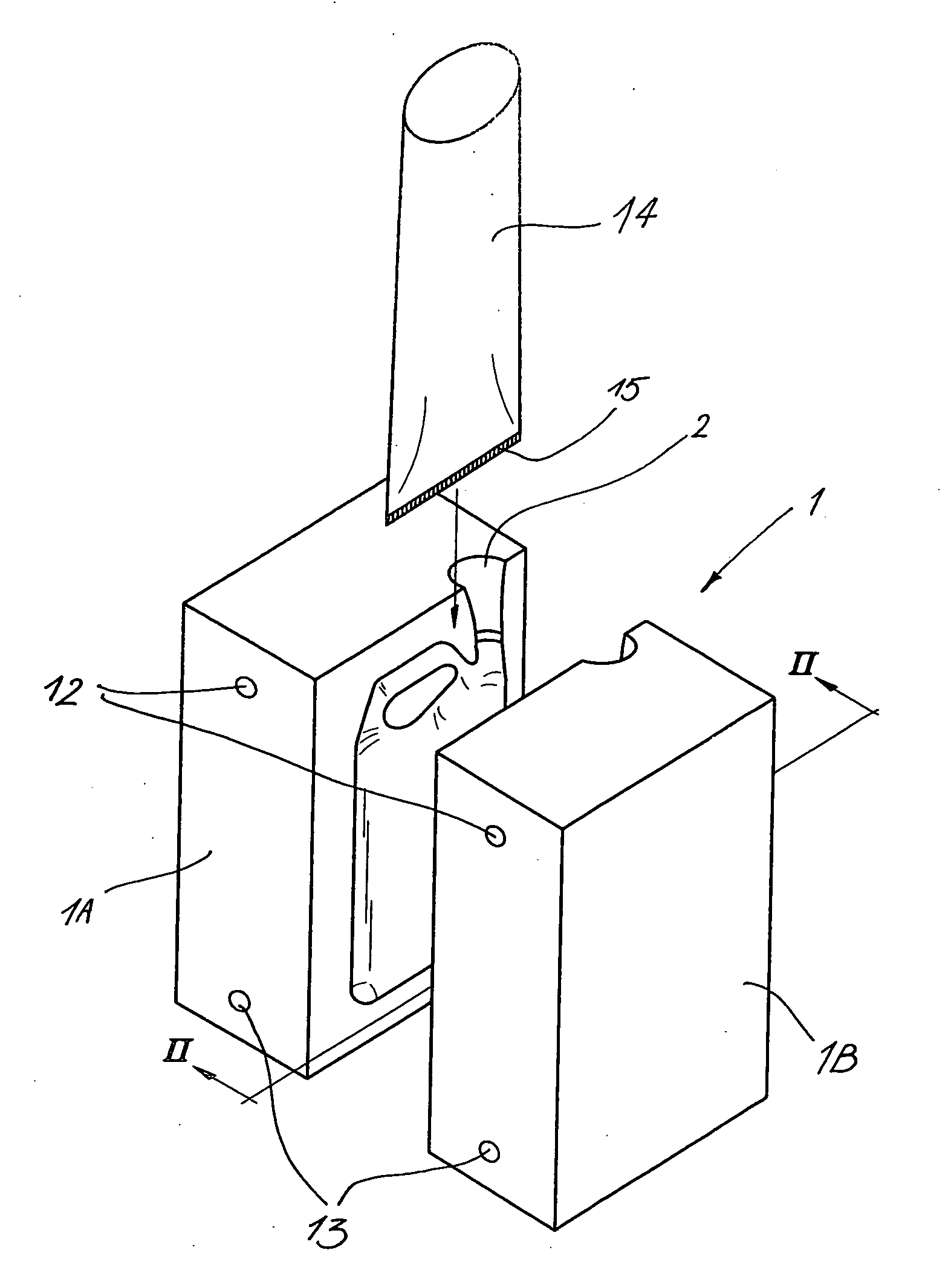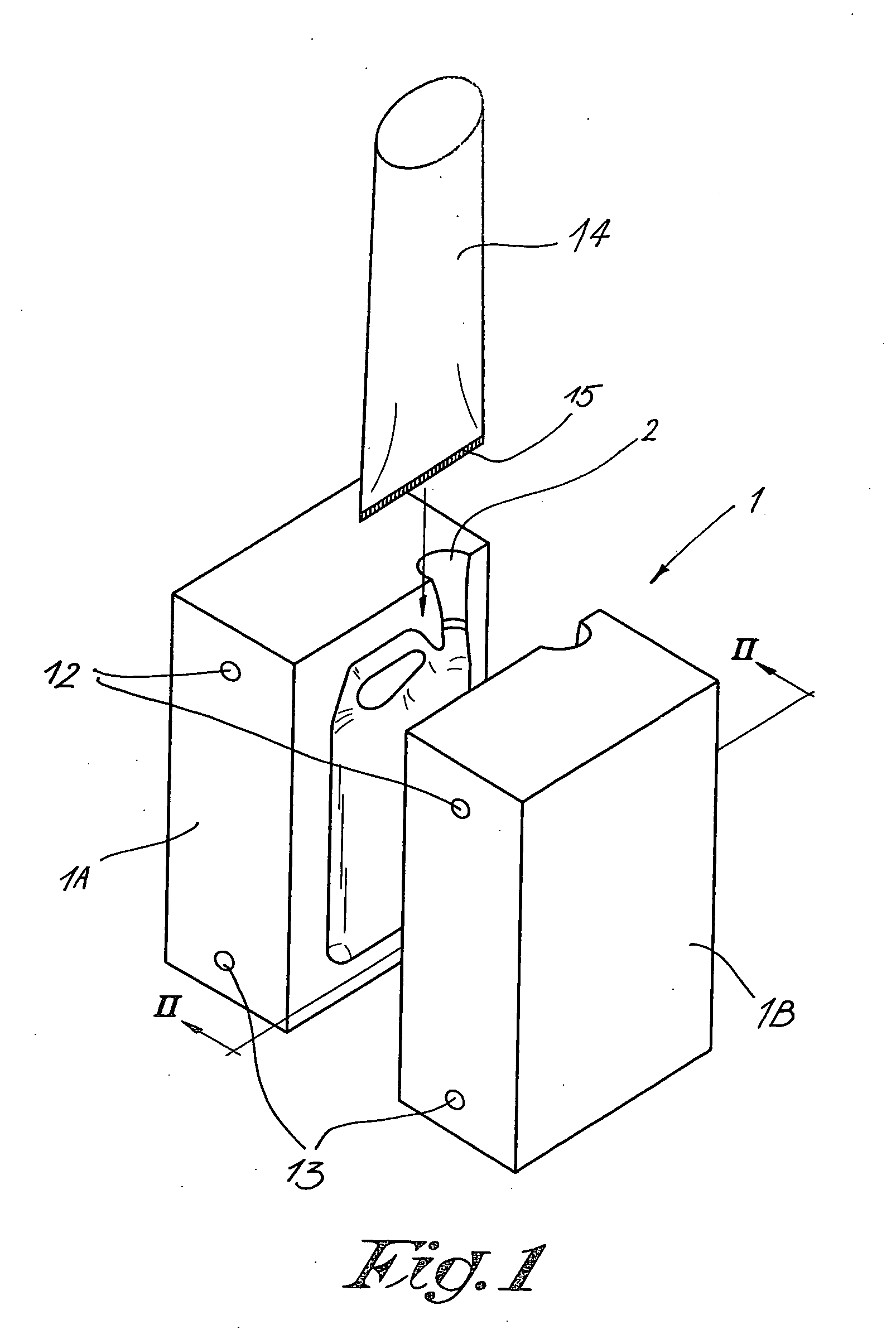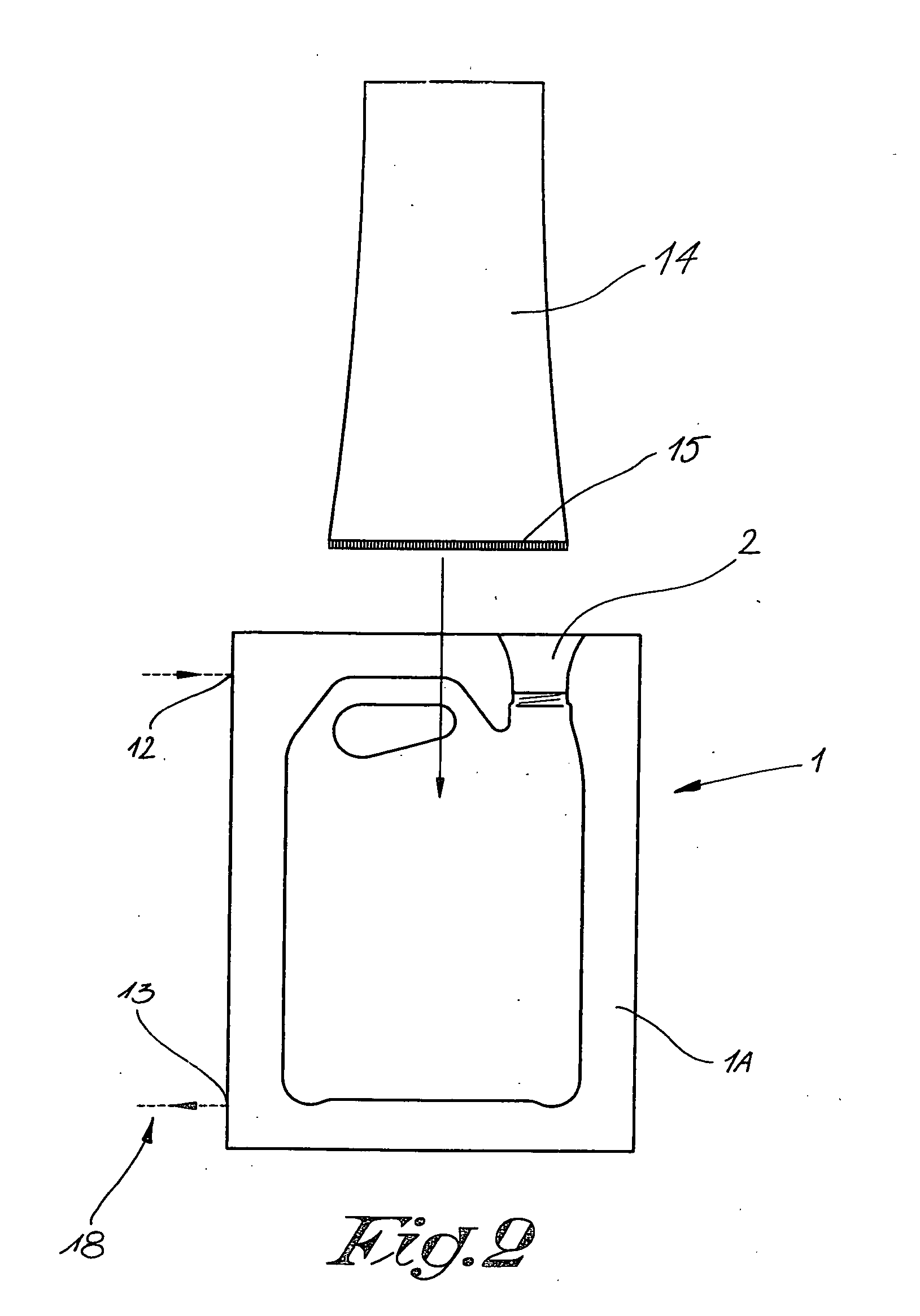Method for blowing objects
a technology for blowing objects and objects, applied in the field of blowing objects, can solve the problems of wasting energy on valves and compressors which are part of the compressed air network, unable to give off heat created while forming objects with difficulty, and requiring a lot of energy to apply such modulating on/off switches, etc., to achieve considerable energy saving, reduce cycle time, and increase the efficiency of production process
- Summary
- Abstract
- Description
- Claims
- Application Information
AI Technical Summary
Benefits of technology
Problems solved by technology
Method used
Image
Examples
Embodiment Construction
[0027] FIGS. 1 to 5 represent a mould 1 for blowing synthetic objects, for example in this case canisters for storing liquids, which mould 1 is made in two parts in the known manner, whereby these two mould parts 1A and 1B, can be moved away from each other and towards each other by means of a driving mechanism which is not represented in the figures.
[0028] In the above-mentioned mould 1 is provided at least one opening 2 in which can be provided a blowing needle or blowing mandrel 3 to blow an object 4.
[0029] The above-mentioned blowing mandrel 3 in this case consists of two concentric ducts for compressed air, more specifically an inner supply duct 5 and an outer discharge duct 6.
[0030] The supply duct 5 is hereby connected to a compressed air network 7 which may for example be provided with an adjustable inlet cock 8.
[0031] The outlet of the discharge duct 6 is, in this case, connected to the atmosphere via an adjustable throttle valve 9, which throttle valve 9 is preferably ...
PUM
| Property | Measurement | Unit |
|---|---|---|
| temperature | aaaaa | aaaaa |
| relative pressure | aaaaa | aaaaa |
| pressure | aaaaa | aaaaa |
Abstract
Description
Claims
Application Information
 Login to View More
Login to View More - R&D
- Intellectual Property
- Life Sciences
- Materials
- Tech Scout
- Unparalleled Data Quality
- Higher Quality Content
- 60% Fewer Hallucinations
Browse by: Latest US Patents, China's latest patents, Technical Efficacy Thesaurus, Application Domain, Technology Topic, Popular Technical Reports.
© 2025 PatSnap. All rights reserved.Legal|Privacy policy|Modern Slavery Act Transparency Statement|Sitemap|About US| Contact US: help@patsnap.com



